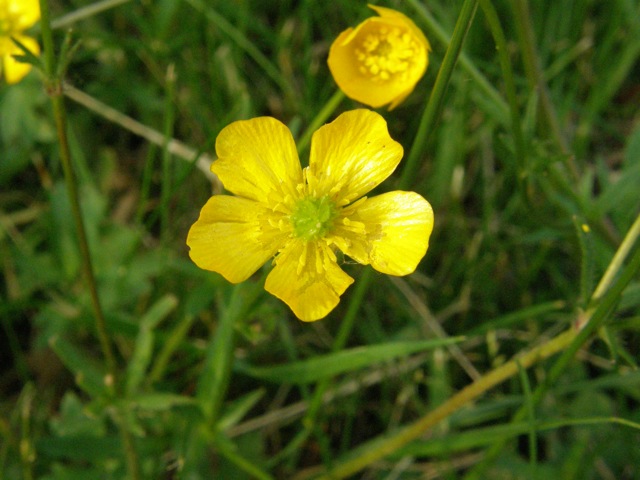Ranunculaceae, the crowfoot or buttercup family.
Description:
Plant:
Delicate plant 1'-2' high with shiny yellow flowers.
Leaves and stems covered with fine hairs. Roots bulbous as the name suggests.
Perennial.
Flowers:
Bright yellow, shiny, with five petals, about 1" across.
Many stamens, in common with other members of the buttercup family.
Leaves:
Mostly basal, to 4" long. Divided into three deeply cut lobes attached
by short stalks. Overall shape is generally round.
Fruit:
A globose cluster of dry seeds.
Blooming:
May-June, sporadically later.
Habitat:
Fields, roadsides.
Comments:
A European introduction.
The shiny appearance of the flowers is due to a distinctive layer of cells
just below the surface.
The [[Common Buttercup]] (R. acris) has a similar flower, but can be distinguished by the
leaf which is deeply cut, but unstalked.
Many buttercup family members are more or less poisonous and
the fresh plants can poison livestock and impart a unpleasant flavor to milk.
The family includes the very poisonous baneberry.
The bulbous roots of this species contain an acrid juice that can cause
blistering; however, when boiled or dried, the roots are said to become
edible and nourishing.
I would try this with some caution.
Where to find it:
Found in field areas throughout the park.
Most common in the drier, hillside field on the northeast side of the pond.
Common buttercups also occur here, but prefer the moister areas.
